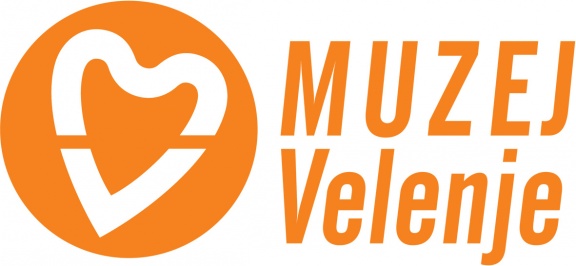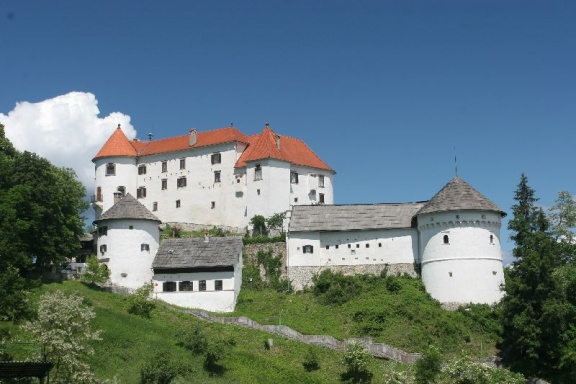Difference between revisions of "Velenje Castle"
Ivan Pirnat (talk | contribs) m |
Ivan Pirnat (talk | contribs) |
||
| Line 16: | Line 16: | ||
| name = Damijan Kljajič | | name = Damijan Kljajič | ||
| role = Director | | role = Director | ||
| − | | email =damijan.kljajic@muzej-velenje.si | + | | email = damijan.kljajic@muzej-velenje.si |
}} | }} | ||
}} | }} | ||
| Line 22: | Line 22: | ||
{{Teaser| | {{Teaser| | ||
| − | [[Velenje Castle]] was a strategically important fortress first mentioned in 1270 now houses [[Velenje Museum]] that was established in [[established:: 1957]] as Museum of Slovene Coalmines. Together with its neighbouring castles of Šalek and Ekenštajn, various owners of [[Velenje Castle]] in the middle ages controlled the routes from the Celjska kotlina basin to Carinthia. The castle is a popular venue for various cultural and music events organised by the ‘events’ section of [[Velenje Library]]. Velenje Museum gives the castle its full functionality filling the premises with eleven museum and gallery collections. Mastodon collection of prehistoric elephant from Škale near Velenje, Saleška valley in the middle ages, Baroque Church art (St. George in Škale), collection of African vessels, masks and puppets gathered by Czech academic sculptor František Foit during his 25 years in Africa, reconstructions of a shop with mixed goods and inn from the beggining of 20th century, exhibition How Velenje Became a Town, Saleška Valley during second world war, permanent art exhibitions of Slovene painter from Cerknica Lojze Perko, Ciril Cesar sculpture collection and Gorenje Contemporary Art Gallery with approx. 800 works from modernism to contemporary art. | + | [[Velenje Castle]] was a strategically important fortress first mentioned in 1270 now houses [[Velenje Museum]] that was established in [[established:: 1957]] as Museum of Slovene Coalmines. Together with its neighbouring castles of Šalek and Ekenštajn, various owners of [[Velenje Castle]] in the middle ages controlled the routes from the Celjska kotlina basin to Carinthia. The castle is a popular venue for various cultural and music events organised by the ‘events’ section of [[Velenje Library]]. Velenje Museum gives the castle its full functionality filling the premises with eleven museum and gallery collections. Mastodon collection of prehistoric elephant from Škale near Velenje, Saleška valley in the middle ages, Baroque Church art (St. George in Škale), collection of African vessels, masks and puppets gathered by Czech academic sculptor František Foit during his 25 years in Africa, reconstructions of a shop with mixed goods and inn from the beggining of 20th century, exhibition How Velenje Became a Town, Saleška Valley during second world war, permanent art exhibitions of Slovene painter from Cerknica Lojze Perko, Ciril Cesar sculpture collection and Gorenje Contemporary Art Gallery with approx. 800 works from modernism to contemporary art. Under castle there is 90 meter plastic ski jump facility, where every summer international ski jump continental cup is held. |
}} | }} | ||
==Castle History== | ==Castle History== | ||
First documents mention owners of Velenje Castle (Welen, vest Welen, Wöllan) Kunšper gentlemen in 1270. Their relatives, Ptuj gentlemen bought castle in 1322, but gave it away as dowry to Liechtenstein family. Counts of Celje conquered castle for a while at the end of 14th century, but had to return it after the decree of duke Albert of Habsburg in 1393. Family Wagen von Wagensberg entirely renovated the construction in the 16th century and the fortress was transformed in a Renaissance residence. Until beginning of 17th century castle changed many owners, than Sauer family remained as owners for almost 200 years. 19th and 20th century were crucial that Velenje castle remained in decent condition. In 19th century it was bought by Karl and Bianca Adamovich. The last owner of the castle count Coronnini-Kromberg used the castle only as a summer residence until 1943 when Germans drove him out of Velenje after the Italian capitulation. | First documents mention owners of Velenje Castle (Welen, vest Welen, Wöllan) Kunšper gentlemen in 1270. Their relatives, Ptuj gentlemen bought castle in 1322, but gave it away as dowry to Liechtenstein family. Counts of Celje conquered castle for a while at the end of 14th century, but had to return it after the decree of duke Albert of Habsburg in 1393. Family Wagen von Wagensberg entirely renovated the construction in the 16th century and the fortress was transformed in a Renaissance residence. Until beginning of 17th century castle changed many owners, than Sauer family remained as owners for almost 200 years. 19th and 20th century were crucial that Velenje castle remained in decent condition. In 19th century it was bought by Karl and Bianca Adamovich. The last owner of the castle count Coronnini-Kromberg used the castle only as a summer residence until 1943 when Germans drove him out of Velenje after the Italian capitulation. | ||
| − | After the Second World War the castle became part of general social property. Social apartments were made there, a lot of furniture was demolished and the building would fall into ruins if Velenje coalmine wouldn't founded in 1957 a Museum of Slovene Coalmines there. Gradually first collections were organized and at the same time an intensive renovation of the building was done. | + | After the Second World War the castle became part of general social property. Social apartments were made there, a lot of furniture was demolished and the building would fall into ruins if Velenje coalmine wouldn't founded in 1957 a Museum of Slovene Coalmines there. Gradually first collections were organized and at the same time an intensive renovation of the building was done. Today it is one of the best preserved castles in Slovenia. |
Castle underwent substantial modifications especialy during the early 16th century; subsequent improvements over the last few centuries have given it the shape as we see it today - a residential building with vaulted cellars and a beautiful, arcade-enclosed courtyard, surrounded by a five-armed external wall with defence towers that dominate Velenje landscape. | Castle underwent substantial modifications especialy during the early 16th century; subsequent improvements over the last few centuries have given it the shape as we see it today - a residential building with vaulted cellars and a beautiful, arcade-enclosed courtyard, surrounded by a five-armed external wall with defence towers that dominate Velenje landscape. | ||
Revision as of 14:51, 12 February 2010
Castle History
First documents mention owners of Velenje Castle (Welen, vest Welen, Wöllan) Kunšper gentlemen in 1270. Their relatives, Ptuj gentlemen bought castle in 1322, but gave it away as dowry to Liechtenstein family. Counts of Celje conquered castle for a while at the end of 14th century, but had to return it after the decree of duke Albert of Habsburg in 1393. Family Wagen von Wagensberg entirely renovated the construction in the 16th century and the fortress was transformed in a Renaissance residence. Until beginning of 17th century castle changed many owners, than Sauer family remained as owners for almost 200 years. 19th and 20th century were crucial that Velenje castle remained in decent condition. In 19th century it was bought by Karl and Bianca Adamovich. The last owner of the castle count Coronnini-Kromberg used the castle only as a summer residence until 1943 when Germans drove him out of Velenje after the Italian capitulation. After the Second World War the castle became part of general social property. Social apartments were made there, a lot of furniture was demolished and the building would fall into ruins if Velenje coalmine wouldn't founded in 1957 a Museum of Slovene Coalmines there. Gradually first collections were organized and at the same time an intensive renovation of the building was done. Today it is one of the best preserved castles in Slovenia.
Castle underwent substantial modifications especialy during the early 16th century; subsequent improvements over the last few centuries have given it the shape as we see it today - a residential building with vaulted cellars and a beautiful, arcade-enclosed courtyard, surrounded by a five-armed external wall with defence towers that dominate Velenje landscape.




